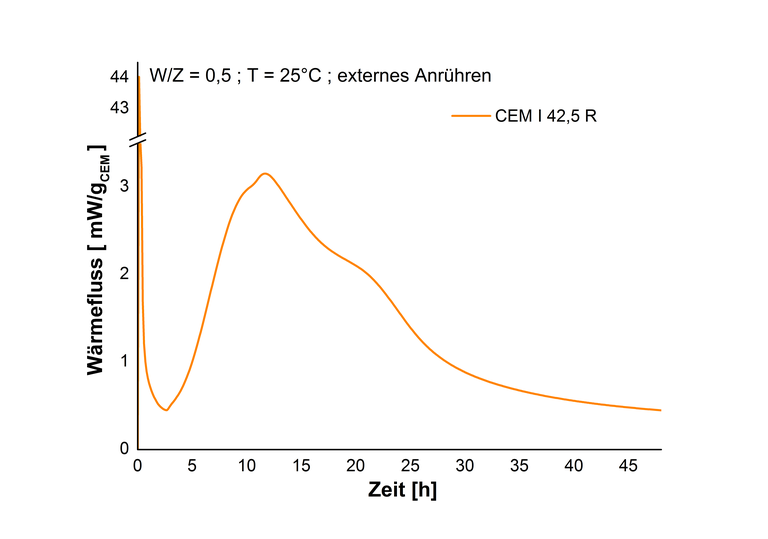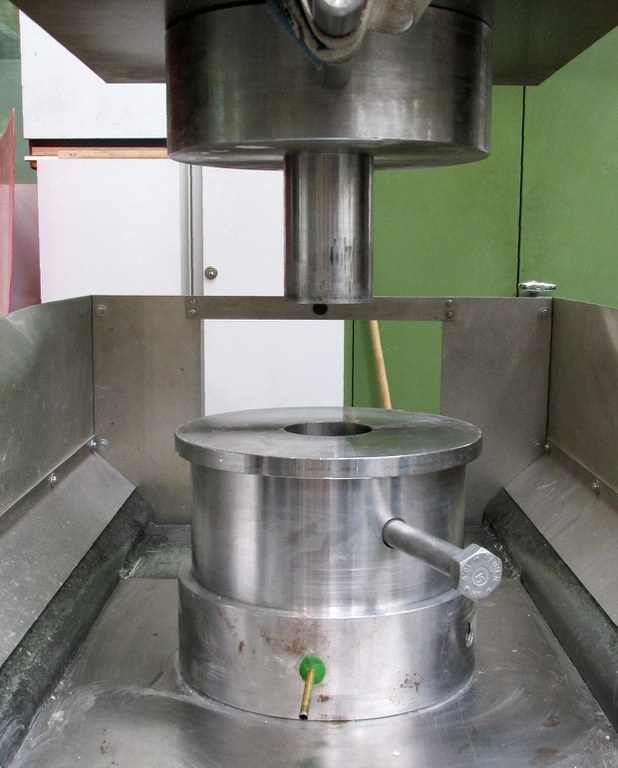Binders and admixtures
The binder laboratory is used for paste and mortar trials as well for lightweight and normal weight aggregate tests. Standard equipment is available such as mortar mixers, Vicat’s stiffness measuring apparatus, gas pycnometer, sieving machine, and devices for investigating rheological properties such as for instance Viscomat NT, shrinkage cone, mortar V-funnel and Marsh’s cone. The lab is used besides for students laboratory classes and bachelor or master theses for initial examinations of all constituents for subsequent mortar and concrete tests.
Fines and densities
The lab has several options for measuring fines and densities of granular materials.
BET-Test
The procedure named after Brunner-Emment-Teller is applied for precise determination of the specific surface area of solid mater by means of gas adsorption. The measurement of the so-called BET surface of powders, granulates and porous materials uses a gas like helium or nitrogen for which the mix proportion fine automatically adjusted by using a mass-flow-valve. A thermal conductivity sensor measures the quantity of gas adsorbed or desorbed. The test is based on the quantitative determination of the adsorbents or the adsorptive which is necessary for covering completely the outer and the freely accessible inner surface of the solid sample with a monolayer of the adsorbent.
Air-permeability measurement according to Blaine
Measuring the air-permeability is applied in order to determine the grinding fines of a powder-like substance a porous system is manufactured of defined mass end porosity out of the solid matter under investigation. This compacted material sample has a flow resistance for gas which is proportional to its surface.
Density of powders
The gas pycnometer is used for measuring the density of solid powder-like materials. The test gas helium fills even smallest pores (pore diameter 10-10 m).
Density of aggregates
Capillary of flask pycnometer for measuring the particle density of aggregates.
Behavior during hydratation
Heat-flow calorimetry
Isothermal heat-flow calorimetry is a procedure which can determine the thermal ernergy released due to an exothermal phase change as a function of time. The energy released is measured in comparison with an inert reference substance and registered. It is applied in the area of construction materials for measuring the heat of hydration released by (latent) hydraulic or pozzolanic binders and for determining the impact of additives and admixtures upon the hydration.

Figure: Heat flow in the course of the hydration of a Portland cement
The isothermal heat-flow calorimeter TAM Air from TA Instruments has eight independent measuring channels with a reference cell each. The operation temperature of the calorimeter ranges from 5 °C up to 90 °C. The HDPE sample flasks in use hold a sample volume of 20 ml and permit measurements in the range from 5 °C up to 50 °C.
Investigating pore solution of binder paste and concrete
The chemical analysis of the pore solution is a decisive method for characterizing the reaction mechanism and it serves as well as a tool for describing some deterioration mechanisms in cement based construction materials. The pore solution is squeezed out of the specimens the devices shown in the figure below. The procedure is based on Longuet’s method1). At a pressure of 800 MPa in maximum the pore solution is squeezed out at a loading rate of 2 kN/s. The pore solution flows through a small tube and is collected for subsequent chemical analysis.

Figure: Squeeze-out equipment placed in a loading frame
1) Longuet, P., Burglen, L., Zelwer, A.: La phase liquide du ciment hydraté. Revue des Matériaux de Contruction 676 (1973), 35-41
Fresh mortar tests
Onset of setting and soundness
Common standard procedures apply for determining the onset of setting, the start of stiffening and soundness.
Water demand according Puntke
The water demand according Puntke plays a decisive role for comparing different binders such as cement, flay ash or calcined clay. The German Guideline "Selfcompacting Concrete (in German), 2003, edited by Deutschen Ausschuss für Stahlbeton (DAfStb), describes the procedure in detail.
Shrinkage cone
The shrinkage cone provides the opportunity of measuring shrinkage and expansion of liquid construction materials right after mixing via the onset of setting and upto the start of stiffening. A laser follows touchless the deformation of the samples surface. Thus plastic shrinkage can be observed and recorded. There are different temperature controlled cone sizes available for mortar and concrete.
Rheology
Viscosity measurements for slurries
The Viskomat NT measures the relative viscosity of slurries such as cement paste, cement mortar or similar slurries of mortars with particle sizes of 2 mm maximum. The relative viscosity provides insights into
- the stiffening behavior,
- the effect of additives and admixtures and
- the effect of different temperature levels upon the material under investigation.
A temperature sensor integrated into the paddle takes up the sample temperature during the ongoing measurements. A cryostat permits a controlled temperature conditioning of the sample. Test regimes can be defined freely. The following information is recorded during the measurement: time, temperature, torque, speed of rotation or the angle.
Fresh concrete rheometer BT-2
This piece of equipment determines rheological properties of fresh concrete like relative viscosity and relative shear limit. In contrast to the commonly used flow table test the rheometer measures the shear resistance (relative viscosity and relative shear) of fresh concrete under well-defined loading conditions.
The measuring container is first fill with 20 dm3 of fresh concrete. The BT-2 is placed on top of the container and the handle is used for one initial rotation. Two measuring arms sitting under the BT-2 in different distances dive into the concrete during the rotation. Each arm registers the torque and in parallel the drive rotational speed. Both information are used for calculating the relative flow curve.
The BT-2 sends its data via an infrared interface to a mobile device where the measurement is displayed graphically. The data can be copied to a computer for further processing.